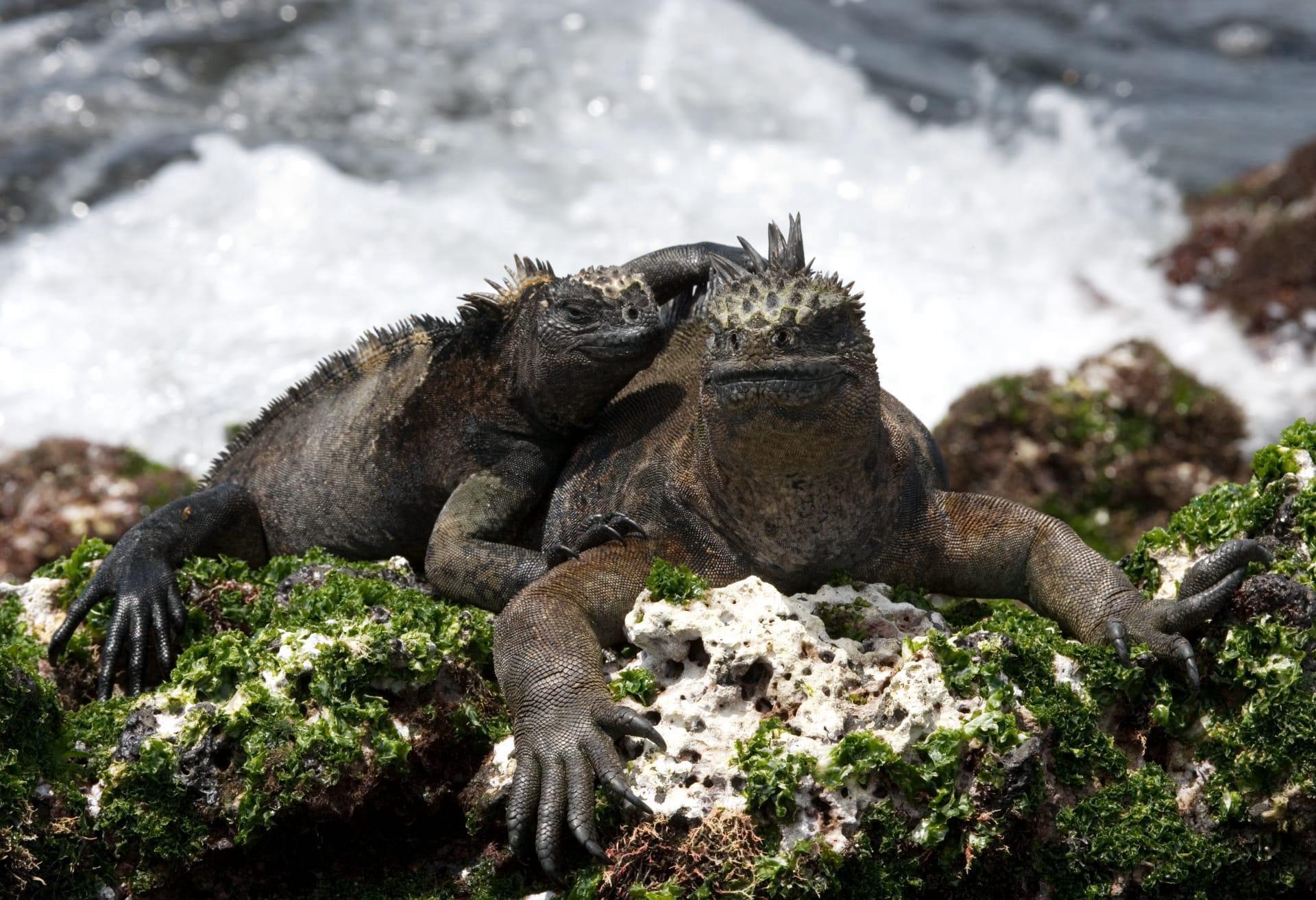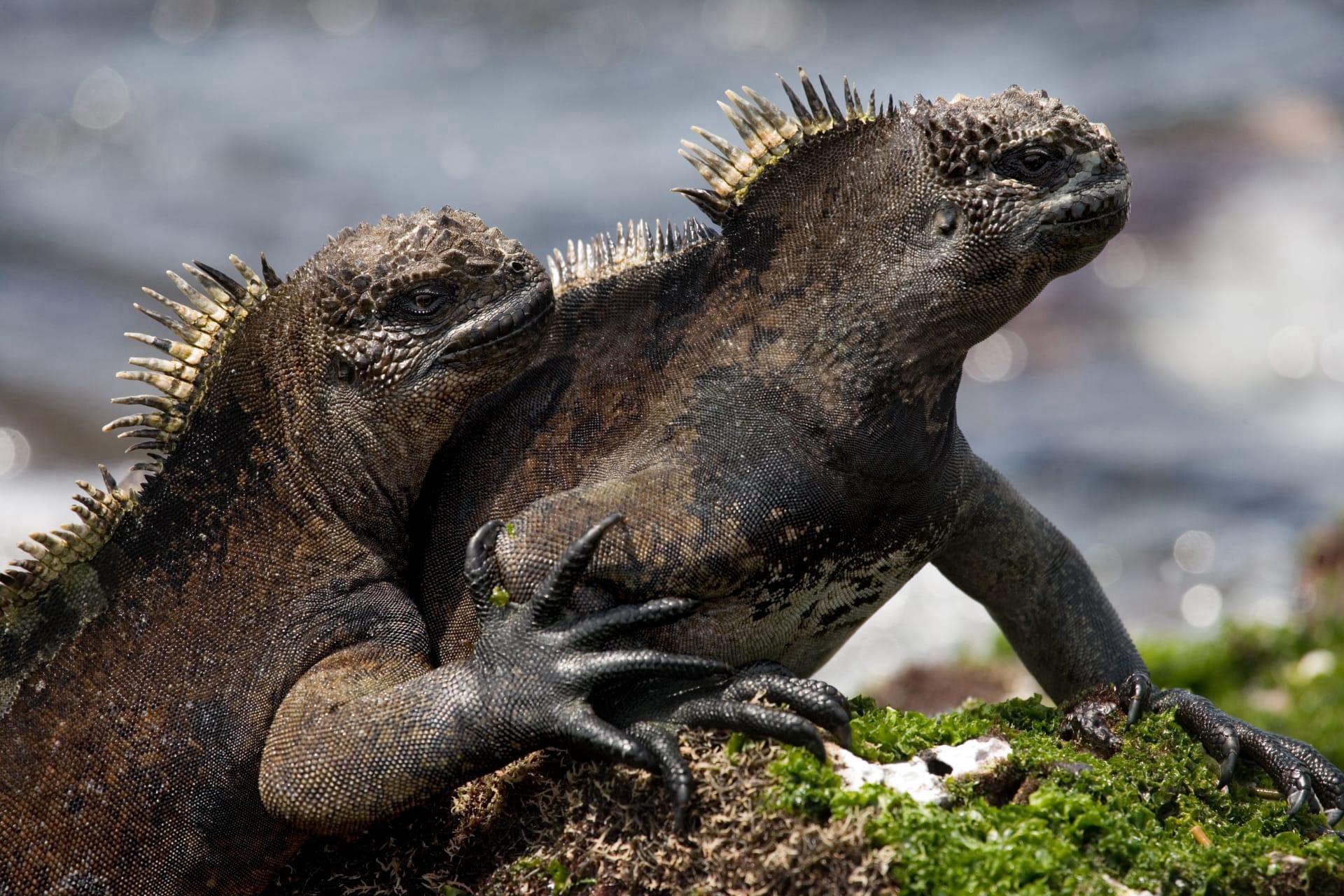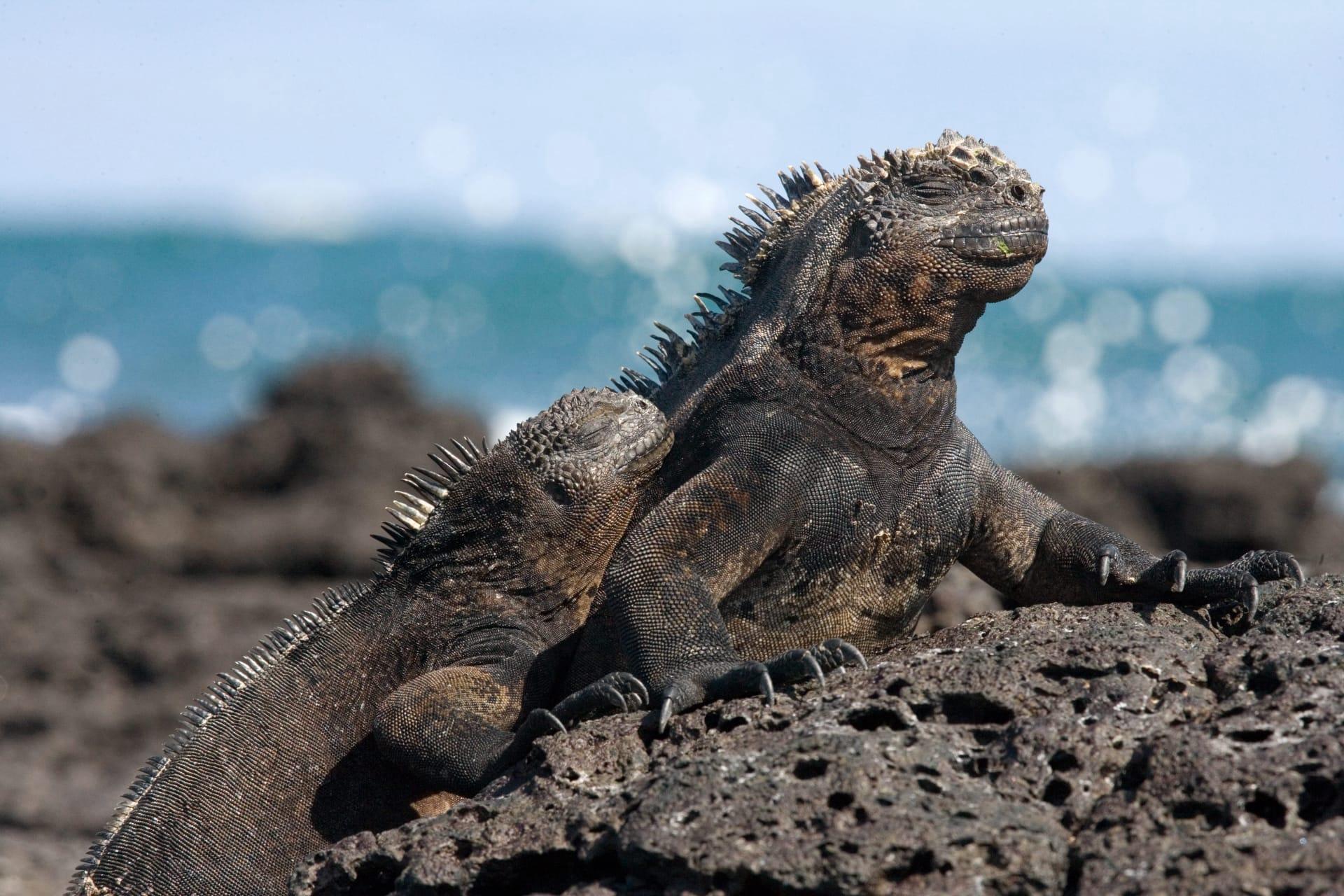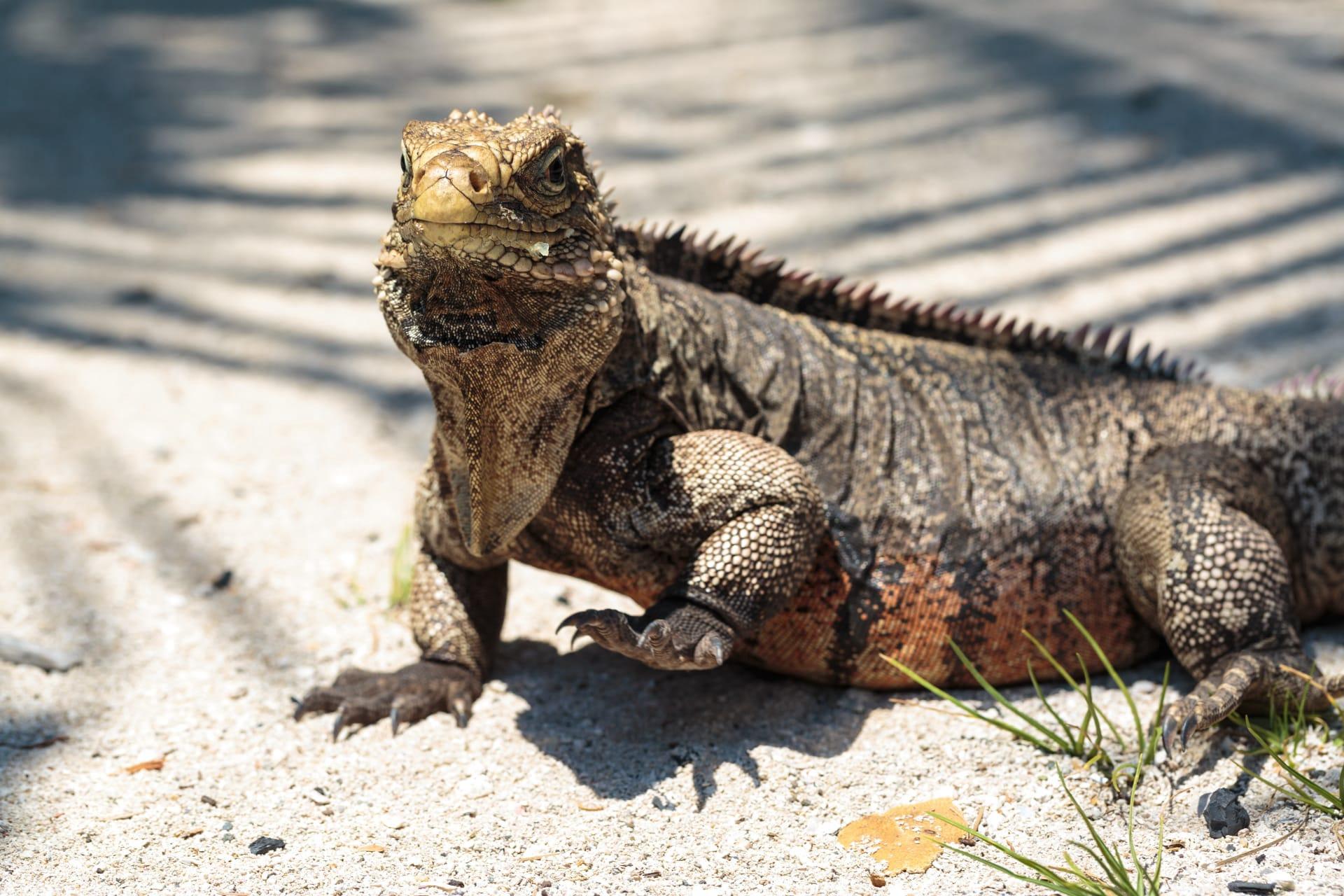Marine Iguana Trivia
- Home /
- Trivia Question /
- Animal /
- Marine Iguana Trivia
1
Question: What unique adaptations do marine iguanas have for their aquatic lifestyle?
Answer: Marine iguanas, found only in the Galapagos Islands, have several unique adaptations for their aquatic environment. They can dive up to 30 feet deep and stay submerged for up to an hour, thanks to their flattened tails that aid in swimming and sharp claws for clinging to rocks underwater. Their specialized salt glands help them expel salt, which they ingest while feeding on algae, by sneezing it out, avoiding salt overload in their bodies.
Question: How does the diet of a marine iguana influence its size and physical appearance?
Answer: The diet of marine iguanas, primarily algae, greatly influences their size and physical appearance. Larger iguanas are able to dive deeper and feed on more nutritious algae, leading to bigger body sizes. During the El Niño season, when algae are scarce, they can shrink their skeletons up to 20% to survive. Their coloration varies from black to red and green, especially in males, which intensifies during mating season, likely for attracting mates.

2
Question: Is it true that marine iguanas are aggressive and dangerous to humans?
Answer: Contrary to some misconceptions, marine iguanas are not aggressive or dangerous to humans. They are generally docile creatures and mainly focus on sunbathing and feeding. However, like any wild animal, they can become defensive if threatened or provoked, but they usually prefer to flee rather than fight.
Question: Do marine iguanas only live in the water?
Answer: While marine iguanas are well-adapted to the aquatic environment, they don't live exclusively in the water. They spend a significant amount of time on land, mainly for basking in the sun to regulate their body temperature. They are cold-blooded reptiles, and sunbathing helps them to digest food and maintain body warmth.

3
Question: How do marine iguanas regulate their body temperature in varying environmental conditions?
Answer: Marine iguanas are ectothermic, relying on external heat sources to regulate their body temperature. They bask in the sun to warm up after swimming in the cold ocean waters. If they become too hot, they seek shade or pant like dogs to cool down. Their dark skin helps in absorbing heat more efficiently, while their ability to constrict blood flow to the skin minimizes heat loss in cold water.
Question: Can marine iguanas swim from one island to another in the Galapagos?
Answer: Although marine iguanas are strong swimmers, they typically do not swim long distances between islands. Their swimming is mainly for foraging and escaping predators. However, there have been rare instances where iguanas have drifted on floating debris to colonize new islands, a process known as rafting, which has contributed to their distribution across the Galapagos archipelago.

4
Question: What is the breeding behavior of marine iguanas?
Answer: The breeding behavior of marine iguanas is quite fascinating. Males establish territories and display vibrant colors to attract females. They may engage in head-bobbing, push-ups, and sometimes physical combat to defend their territory. Females lay 1-6 eggs in burrows and guard them for several days, but they do not provide parental care after hatching. The hatchlings are independent from birth and must survive on their own.
Question: How do marine iguanas contribute to their ecosystem?
Answer: Marine iguanas play a crucial role in their ecosystem. By feeding on algae, they help in controlling its growth, thus maintaining a healthy balance in the marine ecosystem. They also serve as prey for various Galapagos predators, including hawks and herons. Their presence contributes to the unique biodiversity of the Galapagos Islands and helps maintain the ecological equilibrium.

5
Question: What threats do marine iguanas face in their natural habitat?
Answer: Marine iguanas face several threats in their natural habitat. Climate change, particularly El Niño events, disrupts their food supply, leading to starvation. Invasive species, like cats and dogs, prey on iguanas and their eggs. Human activities, including pollution and habitat destruction, also pose significant risks. Conservation efforts are crucial for their survival, given their limited geographical range and specialized habitat.
Question: How do marine iguanas communicate with each other?
Answer: Marine iguanas communicate primarily through visual and physical cues. Males display vibrant colors and engage in physical displays like head-bobbing and push-ups to assert dominance or attract mates. They may also use body postures and movements to signal aggression or submission. Vocalizations are rare and not a significant part of their communication repertoire, making body language their primary means of interaction.